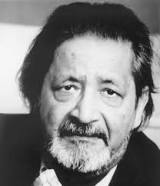
By Kate Jackson
Two fathers, two daughters, Israeli and Palestinian, woven together by two tragedies: this is the substance of Colum McCann’s latest novel. Published in February 2020, the characters and events are based on actual people and events. The word, apeirogon, means “a shape with a countably infinite number of sides.”
The novel begins with Rami, an Israeli man on a motorbike, entering Palestinian territory. His yellow license plate signals his nationality to the border guards. The reader is immediately brought into the divided world where Palestinians and Israelis live separated by walls, barbed wire, barricades and checkpoints. Only the many species of birds, occasional characters in the book, have freedom of movement.
Soon we are introduced to Bassam. He has a distinctive limp as a result of childhood polio. He has a broken heart as a result of the untimely death of his ten-year-old daughter, Abir. She was near her school when she was shot in the back of her head with a rubber bullet.
Midway into the novel, Rami and Bassam meet. They join a Parents Circle. By then, we know their respective stories and the anguish both experienced when their children were taken from them. Rami’s fourteen-year-old daughter, Smadar, died in an explosion set off by Palestinian suicide bombers near a café ten years before Abir died at the hands of an Israeli soldier.
Both fathers have ample reason for bitterness and enmity but over the course of the narrative, form a strong bond of friendship and support. Together and separately, they travel outside their borders to tell their daughters’ stories and confront the futility of violence while demonstrating a way towards healing deep wounds.
As the title suggests, this is a multifaceted tale. It explores the depth of human pain and loss that transcends nationality and time. It reveals the results of policies set by the rulers over the ruled who have no political voice. It is a story of ancient cultures so close in proximity and history and so far apart in attitude. It is the story of two men who found voices to spread messages of peace and hope born out of tragedy.
The book is written with 1,001 sections, some only a sentence or two long and others with many paragraphs. The narrative travels back and forth in time, place and character. It seems repetitious at times. But it is a powerful and unconventional story of and for our times.
The Writer’s Workshop Book Review is published by The Writer’s Workshop. Let us know what you think and if you’d like to contribute a review. We review books of narrative fiction and nonfiction. Please be in touch!
 The Writer's Workshop
The Writer's Workshop 











